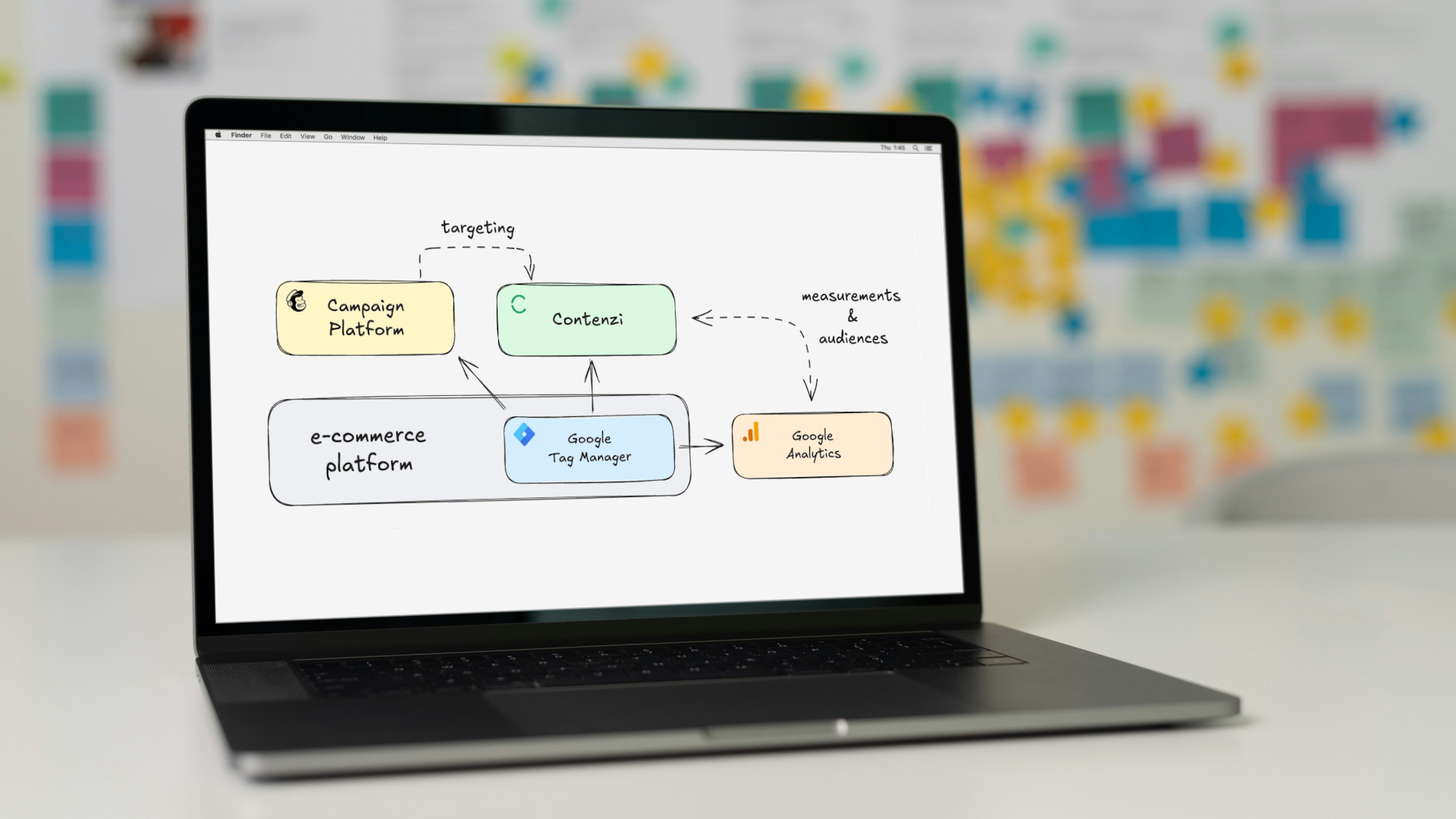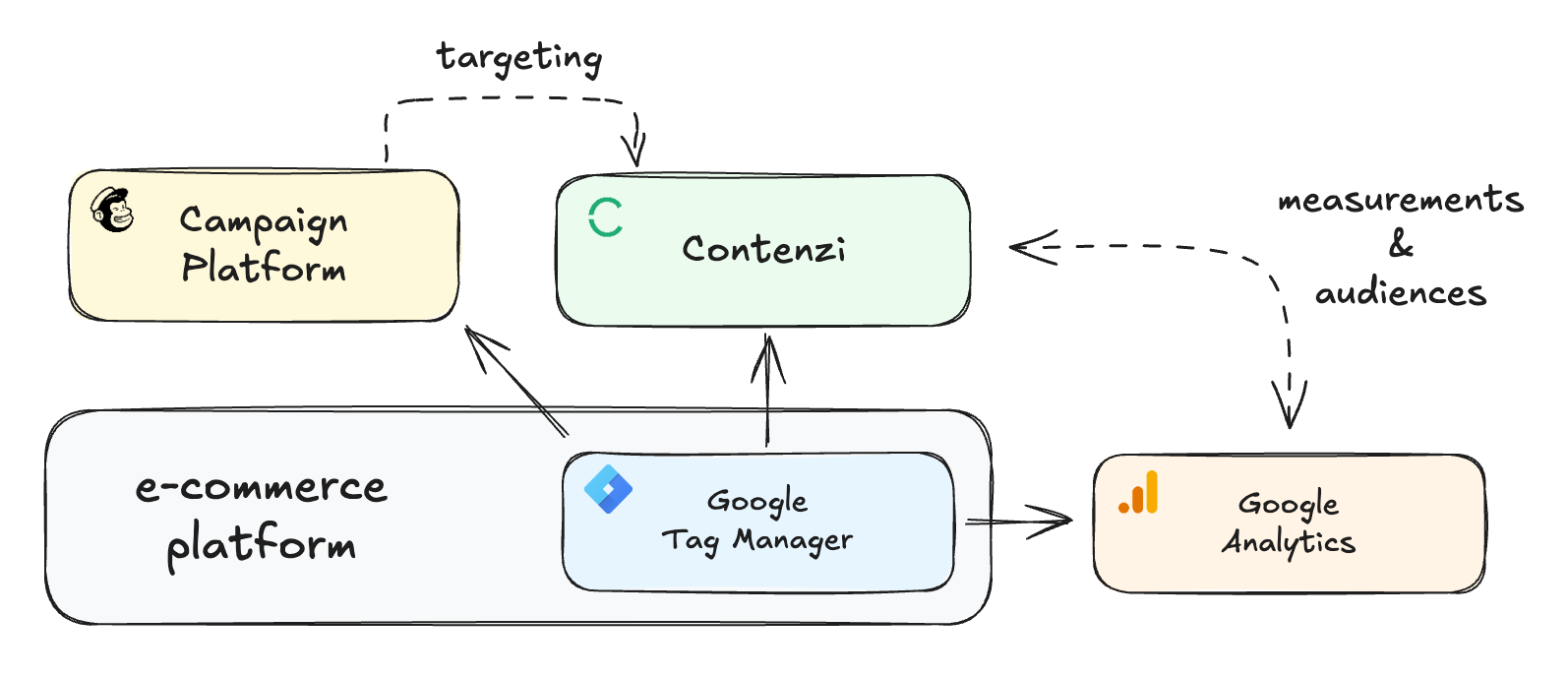Marketing Stacks Part 2: The Cross-Channel Engagement Stack

This is the second article in our Modern Marketing Stacks series, where we explore how ecommerce teams structure their marketing tools as they scale.
The series:
- Part 1: The Starter Stack - Google Analytics, Google Tag Manager, Shopify or Magento
- Part 2: The Cross-Channel Engagement Stack - Shopify or Magento plus tools like Mailchimp and Customer.io, used to orchestrate multi-touch journeys across email, SMS and the website
- Part 3: The Warehouse-Driven Stack - Centred around BigQuery or Snowflake as the data source of truth, using solutions like Rudderstack or Hightouch to distribute data to marketing channels
- Part 4: The CDP-Driven Stack - Led by a CDP such as Segment or Tealium, acting as the central source of truth and enabling real-time activation across channels
Each article explores a different type of martech stack, starting from the simplest foundation and moving toward more advanced data and activation capabilities.
The cross-channel engagement stack
Not every team is ready for a CDP or a data warehouse. But many are ready to connect the dots between email, SMS, and what customers see on the website.
This stack builds on the Starter Stack with tools that help you create more connected customer journeys. You already have a commerce platform. You’re tracking behaviour. Now it’s time to start delivering consistent experiences across touchpoints.

The common components of the Cross-Channel Engagement stack are:
- Shopify or Magento as the core commerce platform
- Google Analytics and Google Tag Manager for behavioural data
- Solutions like Mailchimp or Customer.io for email and SMS automation
This stack is ideal for ecommerce teams who want to go beyond broadcast messaging. You’re likely already running campaigns. The next step is to use behaviour and engagement data to create flows that feel timely and connected. With Contenzi, you can deliver those experiences on the website itself.
What can you do with it?
Using tools like Mailchimp or Customer.io, you can:
- Send browse abandonment or post-purchase messages
- Automate win-back or loyalty campaigns
- Trigger product-focused emails based on interests
And with Contenzi in the mix, you can:
- Reinforce email messages with matching on-site content
- Create consistent promo messaging across email and web
- Show dynamic callouts based on behavioural segments or message history
A simple example: Email + site working together
A visitor adds a winter coat to their cart but doesn’t buy. They receive an email reminder with a 10% offer. When they return to the site, they see the same coat featured in a banner, along with a matching product recommendation.
The experience feels connected. Not in your face, just useful.
Another common pattern: a user clicks on a seasonal campaign email, say a ‘Back to School’ offer, and lands on a homepage that immediately reflects that theme. The top banner highlights the same offer, a content block showcases relevant categories, and a reminder about the promotion appears in the mini cart.
This kind of alignment improves message recall, reduces bounce rate, and helps more visitors move from click to purchase.
The same approach works well for paid media too. A visitor who clicks on a performance marketing ad, for example a Google Shopping ad, can land on a version of the homepage or landing page that reinforces that exact message. Showing the same offer, category, or featured products they saw in the ad improves continuity and increases the chances they’ll engage.
Why it works
This stack strikes a balance. It does not require a full data warehouse or CDP, but it lets you:
- Capture and act on behavioural signals
- Deliver more relevant, cohesive journeys
- Do it all with tools that marketers actually use
It’s a smart move for teams that want more personalisation without a major platform investment.
How it works
This setup is designed to be lightweight. You are not storing much visitor level data. Instead, you rely on event tags in Google Tag Manager to capture key behaviours like product views, cart adds, or email clicks. These can be passed directly into Mailchimp or Customer.io to start or shape campaigns.
On the website, Contenzi uses in-session data to drive real time personalisation. That means the experience updates as users engage, without needing persistent profiles or backend storage.
You can also use URL parameters or GTM’s data layer to pass identifiers like campaign names or user status between tools. It all runs client side, using the tools most teams already have in place.
Grow when you’re ready
The Cross-Channel Engagement Stack is often the first step toward using your customer data more strategically. It opens the door to more advanced segmentation, message targeting, and on-site personalisation, without needing a full data team.
In Part 3, we’ll look at how brands with a warehouse or centralised customer data source can take the next step.
Want to talk it through?
If you’re stitching together messaging across email, SMS and your site, and wondering how to make it all feel more connected, we can help. Chat with us on this page or send us a quick note via the contact form. We’re always happy to explore what’s possible with your current setup.
Like this post?
We write about personalisation, composable architectures, and how to put your data to work in our newsletter.
